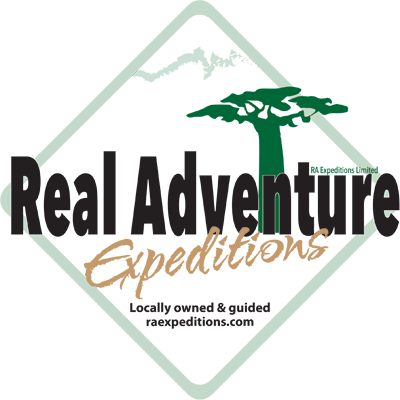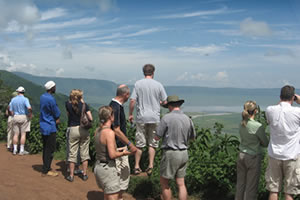 The Ngorongoro Conservation Authority Area boasts the finest blend of landscapes, wildlife, people and archeological sites in Africa. Often called an “African Eden” and ‘eighth natural wonder of the world’, it is also pioneering experiment in multiple land use. For Ngorongoro Conservation Area, the idea of multiple land use means to allow humans and wildlife to coexist in a natural setting. Traditional African pastoralists co-operate with Tanzania’s government bodies to help preserve the natural resources of the area and ensure a fantastic experience for tourists.
The Ngorongoro Conservation Authority Area boasts the finest blend of landscapes, wildlife, people and archeological sites in Africa. Often called an “African Eden” and ‘eighth natural wonder of the world’, it is also pioneering experiment in multiple land use. For Ngorongoro Conservation Area, the idea of multiple land use means to allow humans and wildlife to coexist in a natural setting. Traditional African pastoralists co-operate with Tanzania’s government bodies to help preserve the natural resources of the area and ensure a fantastic experience for tourists.
The First view of the Ngorongoro Crater takes the breath away. Ngorongoro is a huge caldera (collapsed volcano), 250 sq km in size and 600 m deep. The crater alone has over 20,000 large animals including some of Tanzania’s last remaining black rhino. The rhino emerge from the forests in mists of early morning, and their prehistoric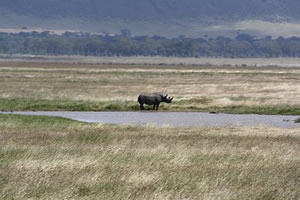 figures make a striking impression, surrounded by the ancient crater walls. No fences or boundaries on the crater walls; animals are free to enter and leave the crater, but many of them stay for the plentiful water and grazing available on the crater floor throughout the year.
figures make a striking impression, surrounded by the ancient crater walls. No fences or boundaries on the crater walls; animals are free to enter and leave the crater, but many of them stay for the plentiful water and grazing available on the crater floor throughout the year.
Open grassland covers most of the crater floor, turning yellowish with wild flowers in June. The Makat soda lake is a great attraction for flamingos and other water birds, while predators hide in the marsh to ambush animals that come to drink from the river that feeds the lake. Swamps in the crater floor allow water and habitat for elephant and hippo as well as numerous smaller creatures such as frogs, snakes and serval cats. Game viewing around Lake Makat is especially rewarding-animals like zebra and gazelle come to drink while herds of hippos sun themselves in thick lakeshore mud.
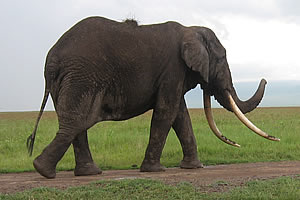 The Lerai Forest on the crater floor gets its name from the Maasai word for the elegantly yellow backed acacia tree. Elephants often graze in the forest shade during mid-day, emerging into the open plains during the early hours of morning and in the evening, as the mid-day heat abates. The small forest patches on the crater floor are home to leopard, monkey, baboon and antelope such as waterbuck and bushbuck.
The Lerai Forest on the crater floor gets its name from the Maasai word for the elegantly yellow backed acacia tree. Elephants often graze in the forest shade during mid-day, emerging into the open plains during the early hours of morning and in the evening, as the mid-day heat abates. The small forest patches on the crater floor are home to leopard, monkey, baboon and antelope such as waterbuck and bushbuck.
Humans and their distant ancestors have been part of Ngorongoro’s landscape for millions of years. The earliest signs of mankind in the Conservation Area are at Laetoli, where hominid footprints are preserved in volcanic rock aged 3.6 million years. The story continues at Olduvai Gorge, a river canyon cut 100m deep through the volcanic soil of the Serengeti Plains. Buried in the layers are the remains of animals and hominid that lived and died around a shallow lake amid grassy plains and woodlands. These remains date from two million years ago. Visitors can learn more details of this fascinating story by visiting the site, where guides provide fascinating on-site interpretation of the gorge.
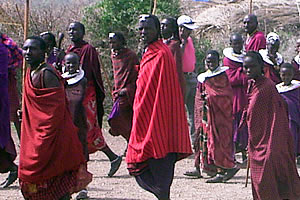 The most numerous and recent inhabitant of the Ngorongoro Area are the Maasai, who arrived about 200 years ago. Their strong insistence on traditional custom and costume interests many visitors. As of today, there are approximately 42,000 Maasai pastoralists living in Ngorongoro with their cattle, goats and sheep. Their presence is the area makes big difference between the Ngorongoro Conservation Area and Tanzania’s national parks, which do not allow human habitation. Cultural ‘Bomas’, or Maasai villages, give visitors chance to meet Maasai people on their own terms and learn more about this complex and interesting culture.
The most numerous and recent inhabitant of the Ngorongoro Area are the Maasai, who arrived about 200 years ago. Their strong insistence on traditional custom and costume interests many visitors. As of today, there are approximately 42,000 Maasai pastoralists living in Ngorongoro with their cattle, goats and sheep. Their presence is the area makes big difference between the Ngorongoro Conservation Area and Tanzania’s national parks, which do not allow human habitation. Cultural ‘Bomas’, or Maasai villages, give visitors chance to meet Maasai people on their own terms and learn more about this complex and interesting culture.
